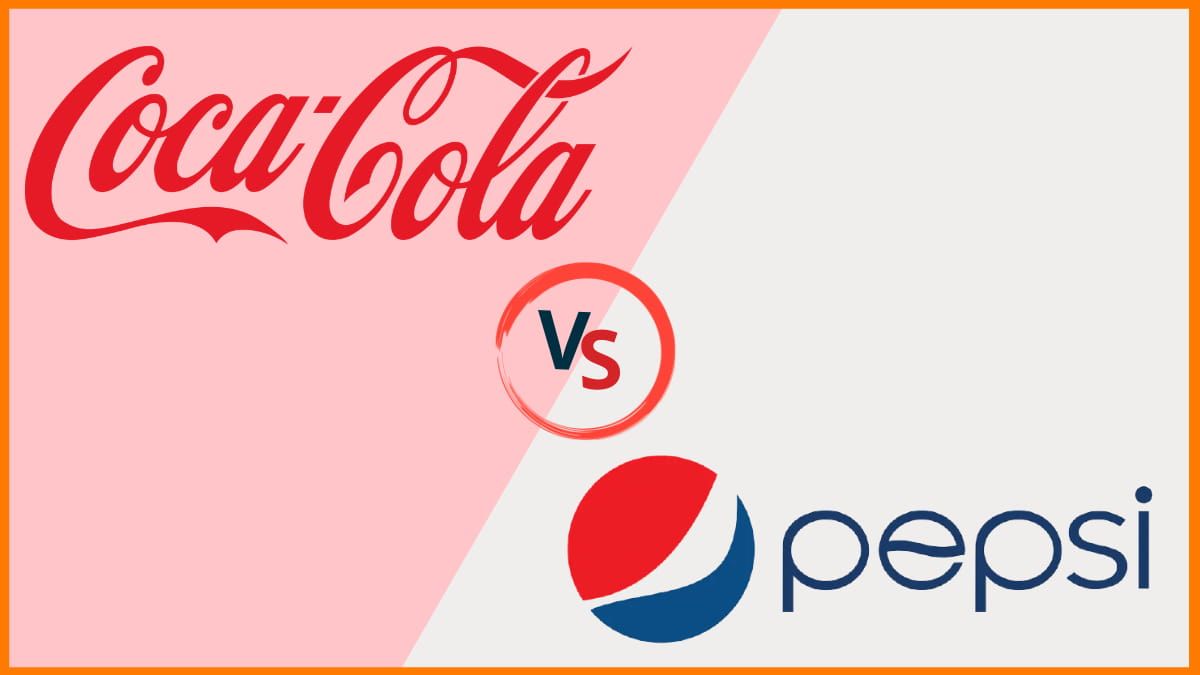D'Mart: Most Successful Indian Chain of Hypermarkets[DMart Case Study]
🔍Insights![D'Mart: Most Successful Indian Chain of Hypermarkets[DMart Case Study]](https://static.startuptalky.com/2021/07/DMart-Case-Study---Startuptalky.jpg)
D'Mart is an Indian chain of hypermarkets established by DMart owner Radhakishan Damani on May 15, 2002. DMart has 214 stores in 72 cities across 11 states in India including Maharashtra, Andhra Pradesh, Telangana, Gujarat, Madhya Pradesh, Chhattisgarh, Rajasthan, National Capital Region, Tamil Nadu, Karnataka, Uttar Pradesh, Daman, and Punjab. So, let's get started with the D'mart case study.
Mumbai headquartered DMart is owned and operated by Avenue Supermarts Ltd. (ASL). After the IPO posting (as Avenue Supermarts Ltd.), it made a record opening on the National Stock Exchange(NSE). DMart’s valuation rose to ₹39,988 crore after the close of the stock on 22 March 2017. This made DMart the 65th most significant Indian firm, followed by Britannia Industries, Marico, and Bank of Baroda. As of 21 November 2019, the market capitalization of DMart was around ₹114,000 crore, taking it on 33rd position of all recorded organizations on the Bombay Stock Exchange.
This article will shed insights on the supply chain model of DMart, its business model, marketing strategies, How DMart was started, key financial highlights of DMart, growth and future of DMart in India & more.

In this Dmart Case Study, we have discussed the -
DMart - Company Highlights
Foundation of DMart & Why DMart is Successful?
Strategic & Organization Structure of DMart
DMart - Business Model & Supply chain Model
Marketing Strategy of DMart
Factors Affecting the Profit of DMart
DMart - Important Financial Metrics
Growth of DMart in India
Future of DMart
DMart - Company Highlights
| Company Name | D Mart |
|---|---|
| Founder | Radhakishan Damani |
| Founded | 15 May 2002 |
| Headquarters | Mumbai |
| Subsidiaries | Avenue E-Commerce Limited, Avenue Food Plaza Private Limited |
| Parent Company | Avenue Supermarts Limited |
Foundation of DMart & Why DMart is Successful?
Unlike Flipkart was established by two 25-year old youngsters toward the beginning of their professions, DMart's establishing story couldn't have been more extraordinary as DMart was established in 2002 by a then-45-year-old Radhakishan Damani at a moment that he'd effectively made his millions. When he established DMart, Damani was an incredible name in Indian securities exchanges. He had already got a few worth stocks that surpassed Gillette and HDFC Bank’s valuations.
Damani, who dropped out of a trade degree after the primary year, had first joined his dad's metal rollers business, yet had begun putting resources into stocks when he was 32. He wound up getting to be one of the greatest stock financial specialists of the 90s, and current securities exchange bull Rakesh Jhunjhunwala believes him to be a tutor. In any case, after an effective financial exchange profession putting resources into shopper confronting organizations, Damani chose to begin his own.
On May 15, 2002, Damani established grocery store chain DMart and embraced techniques that were one of a kind to Indian retail. Up to that point, most retail chains rented their stores, yet DMart picked carefully do its exploration and possessed its very own stores by and large. That technique appears to have worked as DMart has never needed to close down a store since it's opened in every one of the long periods of its activity.
While other retail players forayed into different classifications, including hardware and design, DMart stayed focussed on its center sustenance and basic food item business. What's more, when other store chains are on the whole propelling their very own private brands in an offer to improve edges, DMart still stocks just outsider items.
It's this moderate methodology that has worked for DMart. Other retail chains were picking development, yet for the initial 15 years, Dmart just worked its stores in 4 states. Indeed, even today, the company has 214 stores in 72 cities across 11 states. DMart had a benefit to-deals proportion of 3.7%.
In correlation, other significant Indian retailers don't passage very also Future Group has a benefit to deals proportion of 0.21%, Spencer's Retail had a negative benefit to deals proportion of - 8.9%, and Reliance Retail which works high-edge classifications including hardware and adornments and has more than double the incomes of DMart just dealt with a benefit to deals proportion of 1.6%.
DMart's traditionalist yet beneficial approach is by all accounts demonstrated after its author. Damani is famously media-bashful and gives no meetings. He's said to be modest, all things considered, also he doesn't appear to talk much, yet is evidently a decent audience, engrossing a lot of data rapidly, and afterward following up on it.

And keeping in mind that Damani's success has made him hugely rich because of the flood in DMart's stock value, he's currently worth $15.5 Billion (over Rs 116,200 Crores) regardless he wears a white shirt and white jeans to work, the dress he's been wearing since the 80s. Despite everything, he goes for night strolls on Girgaum Chowpatty in Mumbai and unconditionally converses with the outsiders who approach him after his Dmart's open achievement.

Strategic & Organization Structure of DMart
The ultimate start with DMart needs to make a picture among the majority of a rebate store that offers the vast majority of the items from over every single real brand. Fundamentally, a store that offers an incentive for cash! Presently, since individuals for the most part come to DMart on the grounds that they all what they need under one rooftop; consequently, DMart stores are operational in high rush hour gridlock territories and crosswise over three organizations including Hypermarkets that are spread crosswise over 30,000-35,000 sqft, Express group, that is spread more than 7,000-10,000 sqft and in conclusion, the SuperCenters, that are set up at more than 1 lakh sqft.
What's more, Dmart's intended interest group being the center pay gathering, it uses Discount offers as a special instrument for baiting the clients and expanding deals too. Generally speaking – Dmart's prosperity is centered around three things: Customers, Vendors, and Employees! Take Customers. Since Dmart is focusing on center salary family units, every one of their stores is in, or near, neighborhoods and not in shopping centers.
Their thought isn't to meet each customer's need like different contenders, yet rather, Dmart tries to meet most normal shopper needs, while offering some benefit for their cash. Furthermore, since, 90% of these stores are possessed legitimately by Dmart, they don't need to stress over month-to-month rentals and their ascent, or migration chance. Moreover, this is helping them manufacture resources on their books.
This likewise keeps Dmart all around promoted and obligation light, while its tasks produce extra money. All the cash that is spared utilizing this procedure is at the end offered back to the clients as limits! Sellers! Seller connections are the second mainstay of their model. Since he originates from a dealer foundation, his seller connections have been his greatest quality.

The FMCG business has an installment standard of 12-21 days, however, Dmart pays its sellers on the eleventh day itself. This causes him to remain in the great books of the merchants and dodges stockouts. Furthermore, since Dmart purchases in mass and pays its sellers well in time, they additionally get the chance to win higher edges. Essentially, their procedure is to "Get it low, Stack it high and sell it shabby"!Workers! This is the third mainstay of their model. DMart offers great cash, adaptability, strengthening, and loose and effective work culture.
They even proceed to employ tenth standard dropouts with the correct frame of mind and duty. They incline toward procuring crude ability and afterward put intensely in preparing, to shape them according to their prerequisite. Representatives are simply educated once concerning the worth framework and arrangements at D-Mart and after that are enabled by giving them the opportunity to work without someone continually investigating their shoulders. There is outright lucidity on what should be accomplished, yet you don't have to dread targets.
DMart - Business Model & Supply chain Model
The business model lies at the core of a successful company. A good, foolproof business model not only acts as a pillar for a business to grow but also helps it prosper in a comparatively less amount of time.
DMart, often termed as the Walmart of India, has been quite successful in its business so far, and a major credit goes to the robust business model it has developed over the years.
The chain of DMart operates on a B2C (Business to Consumer) model in which the company sells its goods from the manufacturer’s house to that of the end-user. DMart sells a wide range of products ranging from home care and personal care to grocery and staples, daily essentials, home appliances, footwear, luggage, fruits and vegetables, men’s and women’s apparel, and more. These goods, as we all know, fulfill our everyday needs, and hence, have a significant demand throughout the year. Therefore, they wipe out the possibilities of fluctuations due to high demand and helps the brand get the stability that many others dream about.
DMart is recognized for its thrifty cost structure that has made the company keep its losses under control. Here are some prominent characteristics of DMart’s business model:
Low operational costs and fewer expenses
DMart believes in the effective utilization of the spaces instead of adorning its interiors and shelves fancifully. The company works in launching more and more products in fewer spaces for the customers to choose from, which can also be summed up as a low-interior-cost concept to reduce the operational costs. Besides, when you walk into a DMart store you would also find lesser billing counters, which further works in reducing employee costs.
Ownership model
Damani, the company’s founder, had decided quite early in the game to adopt a store-ownership model. This played a major part in making DMart a low or no debt company, thereby strengthening it financially. Furthermore, the company doesn’t accrue any rental costs, which helps DMart open more stores and gain high positive cash flows. The company owns around 80% of all the stores that it is credited for.
Affordable rates of products
It is usually observed that in the FMCG sector, the retailers pay off the credit to their vendors within a period of 3 weeks whereas DMart pays off their credit within a week. This helps the company benefit in many ways including the huge discounts that they get from the vendors, which in turn is entirely rewarding for the end-users too.
Affordable rate of products with tons of discounts on various products leads to increasing the overall footfall and spike up the sales volume. This increasing sale also helps the manufacturers to rely on the brand and bring in more stocks for the rising demand, which extends another volume discount from the manufacturers' end.
Also Read: The Complete Psychology behind Free Samples & How it Works
Slotting fee
DMart levies a ‘Slotting Fee’. As the term might indicate, it is a fee that DMart charges from the manufacturers to store their products on the shelves of DMart stores, which is also sometimes referred to as an entry fee. DMart, on the other hand, with its appealing marketing strategies and attractive discounts ensures that the products are sold out as quickly as possible.
Sales channel
As discussed earlier, DMart opts for a B2C (Business to Consumer) business model, where the company sells the products directly from manufacturers to the end-consumer. The company purchases its goods in bulk and this eliminates the middleman (distributors and wholesalers) from the chain, which helps in passing their commissions as discounts to the consumers.
Target customers
DMart’s target customers are the middle-class groups and lower-middle-class groups, those who often want to buy low-cost goods that come with hefty discounts but are of good quality. This makes DMart attract an extensive customer base than many other retailers.
Regional Goods
A land of diversity, India nurtures an array of region-specific goods. This gave DMart an amazing opportunity to capture the niche markets with products specific to different regions. DMart researches the popular local brands of a particular region and makes them available, thereby avoiding people’s need to go to the local Kirana stores. This has helped DMart to gain more market share.
Operating strategy
Contrary to their peers and rivals, DMart has always stuck to their own stores and deliberately avoided the malls, which might have otherwise risked the overall sales of the company and increased the expenditure.
Besides, the company is also not very comfortable expanding geographically. The company had its stores only in 4 Indian states until 2014, which only expanded in recent years to 11 states. One another thing is that DMart attracts low marketing costs because the main marketing strategy of DMart is that the company is recognized among its end-users via “word of mouth”.

Marketing Strategy of DMart
DMart is a company that doesn’t believe in marketing aggressively unlike many of its competitors. The company maintains a marketing mix where its Unique Selling Position (USP) lies in offering the products at less than Maximum Retail Price (MRP). This is the most important factor that contributes to keeping the company ahead of its peers.
What DMart indulges in is aggressive CSR activities and other low-cost promotional activities. One of the most promising campaigns is:
Better School, Brighter Futures!
DMart is a company that takes pride in the laudable CSR initiatives that it takes. Over the years, the company has grown to be a huge support for its employees and other communities alike with the help of its socially responsible business practices. This undoubtedly spreads positive vibes all around.
In its “Better School, Bright Futures!” campaign, DMart has launched an amazing program in various schools that are there in and around Mumbai. The sole aim of which helps students understand things better and create an ecosystem that allows them to benefit from better education, mentoring research facilities, and new networking opportunities.
Embracing Low-Cost Advertising Mediums for Promotion
DMart looks up to visual and print mediums to promote its brand name and products. The print medium of advertising revolves around newspaper ads with information about their products, discounts, sales, and coupons.
On the other hand, the visual component of advertisement comprises the banners, flexes, and hoardings that are put to display in locations near the stores to mention the product-specific offers, seasonal discounts, and other freebies that the company offers from time to time.
Digital Presence of DMart
DMart was founded back in 2002 and boasts of an enviable offline presence but when it comes to digital presence it bothered little about it to be true. However, the company has taken a few steps to place it ahead on the digital front. These steps include the installation of a chatbot on Facebook Messenger and the launch DMart Ready.
As of now, DMart uses Facebook as a medium for information, which the brand uses to inform and clear customers’ doubts. The company is yet to explore Instagram and Twitter fully, the proper utilization in the upcoming times will surely help the company set itself more stable in the future.
Factors Affecting the Profit of DMart
Damani is a calm man who stays under the radar, yet his triumphant characteristics are too obvious to possibly be missed. The following are his ways to deal with a business that drove him to thundering achievement:
Design of Logo
Like Warren Buffett, Damani too has been a worth speculator who might take a shrewd perspective on the long haul. When he turned into a business person, he held a similar methodology and manufactured DMart without depending on any speedy alternate ways. For example, he never rents the property for his stores however gets it. In the long haul, it spares him from a major rental outgo. This was a key factor behind the productivity of DMart.
What Is Trifle That's Important
Damani began little and did not rush to grow. Low scale gave him superior control of the store network and enabled him to concentrate on benefits directly from the earliest starting point. In the 18 years of its reality, D Mart has turned a benefit every year.
Evaluation Of People
Damani started with purchasing an establishment of Apna Bazar. That was the point at which he started fabricating individual relations with merchants and providers. He esteems both and they never let him down. The stores never leave stock.
Selling As Cheap
Damani realized what he was doing: offering individuals buyer results of everyday use at substantial limits. That turned into his sole objective. One of his strategies was to pay his providers and sellers inside days rather than weeks which was the business standard. They gave the merchandise at a less expensive rate to him in lieu of early installment. He passed on the money-saving advantages to his clients, which guaranteed steady success.
Go Steady And Slow
In spite of the fact that D-Mart began 18 years prior, despite everything it has 119 stores in a couple of states, a modest number contrasted with those claimed by Ambani and Biyani. Rather than fast development, Damani received a moderate pace which gave him his emphasis on productivity. That is the reason D-Mart has not closed a solitary store since it began and creates higher per-store incomes than the stores of Ambani or Biyani.
Neglect the Herd
Damani had learned and drilled with the progress the craft of not following the crowd while he was a financial specialist. As a business person, he has a similar methodology. There have been such a large number of brand new thoughts in retail, for example, different online business patterns, which he didn't give any significance. Designs or patterns can't impact the man who realizes what he needs and how he can get it.
Available Locally
Despite the fact that DMart is the best basic food item retail chain in the nation, Damani has restricted it towards the western states. One reason is his dependence on neighborhood supplies rather than expand supply chains.
A Job Has Conversation
Damani stays under the radar which bears him all-out devotion to his work. His moderate and quiet ascent in a discouraged division is a sign of his resolute spotlight on work. He has once in a while given a meeting to a TV channel or a paper.

DMart - Important Financial Metrics
The below table highlights the important financial metrics of DMart as per its audited, consolidated financial statements -
(Rs. in crores, unless otherwise stated)
| Particulars | Year ended March 31, 2021 | Year ended March 31, 2020 |
|---|---|---|
| Revenue from Operations | 24,143.06 | 24,870.20 |
| Total Income | 196.21 | 59.99 |
| Total Expenses | 22,855.82 | 23,185.42 |
| Profit before Tax | 1,483.45 | 1,744.77 |
| Net Profit after Tax | 1,099.43 | 1,300.98 |
| EPS per share of Rs.10/-each(in Rs.) | 16.97 | 20.71 |
| Goodwill | 78.27 | 78.27 |
| Total Non-current assets | 9,594.84 | 9,728.78 |
| Total Current assets | 4,061.13 | 2,347.67 |
| Equity Share Capital | 647.77 | 647.77 |
| Total Non-current liabilities | 366.09 | 270.45 |
| Total Current Liabilities | 1,105.77 | 725.80 |
Standalone Results -
For the quarter ended March 31, 2021 (Q4FY21):
- Total Revenue stood at Rs. 7,303 Crore, YoY growth of 17.9%
- EBITDA of Rs. 617 Crore; YoY growth of 47.6%
- PAT stood at Rs. 435 Crore; YoY growth of 51.6%
- Basic EPS for Q4FY21 stood at Rs.6.71, as compared to Rs. 4.49 for Q4FY20
- 13 stores were added in Q4FY21
For the year ended March 31, 2021 (FY21):
- Total Revenue stood at Rs. 23,787 Crore, lower by 3.6%
- EBITDA of Rs. 1,742 Crore; YoY decline of 17.9%
- PAT stood at Rs. 1,165 Crore; YoY decline of 13.7%
- Basic EPS for FY21 stood at Rs.17.99, as compared to Rs. 21.49 for FY20
- 22 stores were added in FY21 and 2 stores were converted into fulfillment centers for Avenue ECommerce Limited.

Growth of DMart in India
Avenue Supermarts running the DMart chain of stores in the nation revealed a 21.4 % year-on-year net benefit development and a 32.1 % year-on-year income development for the quarter finished March 31, 2019, (Q4) at Rs 203 crore and Rs 5,033 crore, separately.
For the three months finished December 31, 2018, DMart had announced its slowest net benefit development in eight quarters at 2.1 % as it pondered developing challenges in basic food item retail.
Second from last quarter income development came in at 33 % (year-on-year), which is likewise a merry quarter, said experts, suggesting the organization had figured out how to keep up its pace of development as far as the top line in Q4 in the midst of focused power. The numbers were comprehensively in accordance with Street gauges. A survey by investigators of Bloomberg had pegged net benefit at Rs 211 crore and income at Rs 5,122 crore for the quarter under audit.
Income before intrigue, duty, deterioration, and amortization (Ebitda) for Q4 was at Rs 377 crore, up 27.9 % throughout the year-prior period and again extensively in accordance with Street assessments of Rs 395 crore. Yet, Ebitda edges contracted for the third straight quarter, however, the drop was negligible at 20 premise focuses to 7.5 % from a year sooner.
This is additionally the most reduced as far as Ebitda edges for DMart in 75%. While the organization did not indicate same-store deals development for Q4, examiners said it was somewhere in the range of 15 and 18 % for the period under audit.
Same-store deals development is the development of a similar deal of stores for one year or more. For the entire year finished March 31, 2019, (FY19), Neville Noronha, overseeing executive (MD) and (CEO), Avenue Supermarts, said same-store deals development was 17.8 % even as income grew 32 % year-on-year to Rs 19,916 crore and net benefit went up 19 % from a year sooner to Rs 936 crore.
The FY19 same-store deals development was higher than the 14.2 % revealed for FY18, division examiners stated, as the firm drove higher deals throughput at its stores. Income from deals per square feet at DMart stores remained at Rs 35,647 for FY19 against Rs 32,719 in FY18, an ascent of about 9 %. The organization additionally included 21 stores in FY19, of which 12 were included in Q4 alone, taking the aggregate to 176 for the monetary year.

Future of DMart
Avenue Supermarts runs the DMart grocery store chain of stores. If in any case, the nation experiences a crisis, financial specialists question whether the organization shows enough strength during these intense occasions. But examiners in a note from Systematix Shares and Stocks (India) Ltd. said, " The continuous crisis in utilization and higher aggressive force in staple retail should confine development in determining deals per square feet to 7% in the financial year 2020 from 13% in FY19."
While speculators will intently follow how that works out in the coming quarters, Avenue Supermarts' income development of almost 27% in the June quarter is nothing to get surprised at. Obviously, it should likewise be referenced at the same time that high development rates are a basic for the DMart share, which is one of the most costly stocks in the nation.
It currently exchanges at amazing multiple times evaluated income for FY20. FY20 has begun an idealistic note for the organization. The development in EBITDA (income before premium, assessment, deterioration, and amortization) edge in the June quarter will mitigate financial specialists' uneasiness about weights on productivity somewhat.
FAQs
What is Dmart?
Founded in 2002, Dmart is an Indian retail corporation that is designed to stand as a one-stop supermarket chain that brings a wide range of products ranging from basic home products, personal products and more.
Where is the Dmart headquarters?
DMart headquarters is in Mumbai, Maharashtra.
Who founded Dmart?
Radhakishan Damani and his family founded Dmart in 2002.
Where was the first branch of D mart?
The first branch of D mart is in Powai's Hiranandani Gardens.
What is the vision and mission of Dmart?
The mission and vision of DMart is "to provide the best possible value for consumers so that every penny spends on shopping gives them more value for money than they would get anywhere else," as per the vision and mission statement of Dmart.
How many D mart stores in India are there in total?
Currently, the total number of D mart stores in India were reported to be more than 234 in number, spread across more than 11 states in India, as per February 2022's reports.
Must have tools for startups - Recommended by StartupTalky
- Convert Visitors into Leads- SeizeLead
- Website Builder SquareSpace
- Manage your business Smoothly Google Business Suite






